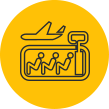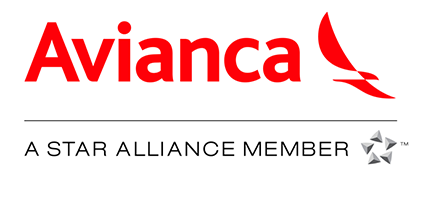One of the most significant impacts in the travel industry in recent years has been the digitization of the traveler’s experience. Mobile and online bookings are expected to grow exponentially over the next five years. With demand in the travel industry and the rapid adoption of consumer technologies along with new alternative payment and reservation methods, fraud management challenges for the travel industry continue to grow. According to Phocuswire, by 2020, airlines will have a flow of $280 billion in sales through direct channels (5% CAGR).

Fraud management is always difficult, but the travel industry faces unique and particularly difficult challenges. Many products in the travel vertical, such as airline tickets and hotel reservations, are sold in digital form. Fraud related to these products is much more difficult to detect because there are fewer standard data points to review (e.g., there is no physical shipping address, and the same “product“ can have huge variations in price). In addition, many fraud prevention systems are based on detecting mismatches: incongruous data points within an order, such as a billing address in a country other than the origin of the IP address where the order was placed. However, such misalignments are common in the travel industry, even in legitimate orders: buyers book hotels and flights on the fly, resulting in unusual IP data, for example.

More and more, service providers (card accepting merchants) tend to separate the sales of flights or travel products from extra services (add-ons); therefore, most of the reservations that the consumer makes, along with other extras, come from different channels, payment methods, dates, etc. As a result, what was once a single transaction is now a fragmented transaction ‘Encompassing different sets of validating information. This increases not only fraud prevention complexity, but also the commercial disagreement risks, where customers take advantage of the gaps of this multi-channel system to debit the company with the excuse that the operation was unknown or questioned by the bank or the card holder.

More of half of card-paid travel sales are made through travel agents. Although the airline or hotel, for example, are undoubtedly the “merchant of record,” they do not conduct the card transaction at the time of sale—the agent does it on their behalf. These agencies collect a significant fee from the service providers, but in case of a chargeback, the “merchant of record” will be responsible for the chargeback and its costs. Moreover, when these merchants try to defend against a chargeback, they depend on what the agencies can share in terms of information about the customer, which makes things even more difficult. The unusual setup of agency card sales, in which the agent operates on behalf of the travel supplier, contributes to neither of the parties feeling fully in charge and, therefore, neither researches how they could improve things over time.

A legitimate client declined by a travel company, such as an airline company, can cause more than financial trouble. Some passengers travel for delicate reasons: health issues, transplants, political meetings, etc. An incorrect decline or a lengthy review process that adds friction to the purchasing process can send your customers directly to the competition and your brand straight to the news. Identity verification can be cumbersome, and it is even more frustrating when it comes to searching for an old confirmation code or sending a photo of your ID and credit card. Recent verification methods, such as text messages, can also leave a bad perception, especially while customers are traveling and are not necessarly connected to their local telephone networks.

Many travelers arrive at the airport or hotel without even imagining that they have participated in fraud. Many of them understand that they have paid a travel agent for their booking. Airlines must have a good arsenal of customer service skills to avoid a negative impact on their image while gathering enough information from the victim to help prevent additional fraud.

The adaptation of the travel industry to the new digital age combined with future price uncertainty has caused consumers to be much more impulsive when booking travel. However, these impulsive purchases may end up causing customer remorse, prompting buyers to look for a way to cancel the purchase and increasing the number of chargebacks.

In some situations, an airplane or ship will start its route regardless of empty seats or cabins, which means that some travel companies prefer to be more tolerant to risk and maximize the chances of collecting money instead of being conservative and losing the sale anyway. In their vision, in the worst-case scenario, they will have provided travel for free, but in case of routes with low occupancy rates, the costs are marginal and low. However, most of these companies forget that fraudsters follow a communication game, and part of fraud prevention success comes from signaling. Once fraudsters have been successful in applying fraud to your company, chances are high that they will share the news on the dark net and the attacks will increase.

Customers are disputing travel bookings, seeing it as a sort of check or balance on the restrictions of nonrefundable polices. Passengers do not need any insurance to attempt to claim a refund, relying on the lack of clarity of some travel polices.

Still, according to Phocuswire, we can break down the travel reservation channels as described below. Each one of these channels have their own particularities regarding chargebacks and frauds.

These agencies are the least exposed to ADMs. By issuing tickets to recurring customers, they become familiar with the procedures

In these agencies, since most sales are face-to-face, the risk of chargeback is lower. However, leisure agencies have greater flexibility with their clients. A lot of flexibility with manual labor increases the chance of human errors that can lead to ADMs.

By issuing tickets to other agencies, they take full responsibility for receiving ADMs. However, they pass on the debit if it is an agency problem.

OTAs work in an automated system, virtually reducing human errors to zero. However, precisely because the process is automated, it receives a large number of chargebacks (credit card fraud). To attempt to reduce ADMs by chargeback, OTAs are introducing rigorous credit verification systems and algorithms based on time/purchase and date of travel prior to ticketing.











In the case of airline companies, there is an opportunity to provide supporting documentation to reverse a chargeback before an Agent Debit Memo (ADM) is issued. The ADM is the transaction used by the airline, who is the “merchant of record” for the transaction, to pass that financial cost on to the travel agent; it is the tool used by airline companies to challenge the travel agencies. ADM rules are set by IATA Billing and Settlement Plan (BSP) requirements. As a best practice, this dialogue should take place between the airline and the agent prior to issuing an ADM.
In turn, a chargeback occurs after a cardholder initiates a merchant dispute with their issuing bank, the issuing bank will then charge back the transaction being disputed to the card accepting merchants (i.e.: airline company) and the cardholder's account is credited. The card accepting merchants will make efforts to avoid chargebacks by providing documentation to the issuing bank that the customer did in fact travel on their ticketed itinerary; however, if unsuccessful, a debit memo may be issued to the travel agency that issued the booking. Even though chargebacks only account for 14% of total ADMs—are still the most costly, making up almost 1/3 of all ADM charges.
When data is presented to try to reverse the chargeback, a debit memo is issued if the card brand decides that the responsibility still falls to the airline—the subsidiary documents didn’t provide enough evidence to prove that the real cardholder authorized the transaction. Thus, in addressing chargeback fraud cases, the number of chargeback ADMs issued could be much less than the number of fraud chargebacks that occured. Through the chargeback management process, the expectation is that there will be fewer chargeback ADMs than chargebacks. The goal is to eliminate unnecessary chargebacks before they are initiated.


First, you can help your customers (the cardholders) recognize the card transaction by informing them that on their card billing statement, they should not expect to see the name of the travel agency, but instead the name of the merchant that the booking is issued for, and reminding them to try and verify the amount being charged before raising an inquiry or a dispute with their card issuer.

After receiving a request for information about a transaction, it may be more effective for the agent to contact his client directly and ascertain the nature of the inquiry. The transmission of further details through the merchant, acquirer, card scheme, and ultimately the issuer, takes time and increases the chances of some information getting out-of-place. Attempting to understand and solve the issue with the client may be the fastest way to resolve the problem and ensure that the client withdraws the inquiry.

Fraud is year-round in this industry, but look for seasonal fluctuations to occur in the lead-up to big travel dates, and don’t forget that these vary by region. Fraudsters who favor the travel industry tend to specialize in the exploitation of this specific vertical. They are well-versed in industry norms and therefore mount more sophisticated types of attacks to bypass any type of fraud detection. The high volume of transactions within these periods means that there is more room for fraudsters to hide behind good customers.

It is imperative to look at site data holistically, understanding the people, stories, and fraudsters behind the attacks, rather than just seeing the transactions. It is common for buyers to make reservations while traveling, meaning it is unwise to invest too much in their IP locations. Fortunately, most OTAs and airlines collect a large amount of very relevant information, such as geographic information, date of birth of the traveler, the type of reservation and fare, the number of travelers on the itinerary, and how long before the trip the purchase was made. A properly configured review system that can observe fraud patterns among these variables and incorporate these patterns into decisions will surely be much more effective than one that would otherwise ignore these data. This information can be used to detect fraud and to help approve orders more quickly for a better shopping experience.

Many travelers use their mobile devices to book hotels and airline tickets while traveling. To avoid falsely rejecting these orders, it is critical to understand that fraud patterns for mobile orders are often quite different from those placed on desktops. For example: in desktop orders, a quick navigation session prior to the payment process can be a warning signal, since legitimate buyers like to browse. Mobile buyers are often more rushed, and a quick payment should not raise eyebrows.

These fraudsters create fake travel agencies or online groups. They purchase tickets or place holds on them with fake credentials and then sell these fraudulent tickets to travelers. The travelers pay full prices for the tickets only to find that their airfare is not real or has been reported as fraudulent. When attempting recourse, the traveler will suddenly find that their ticketing agency has disappeared.

There are almost countless technologies and tools available for agents and merchants to evaluate the risk of card-not-present fraud. The challenge is identifying which tools to implement as part of a comprehensive fraud prevention strategy.

The losses associated with tools such as 3D Secure or Address Verification (AVS) due to false declines and merchant friction can be huge.

Awareness is essential to evaluate and calibrate the chosen solution(s). Designing a fraud prevention policy with clear KPIs (key performance indicators) and respective owners and targets is a good practice
Clarity about feedback from good and bad customer experiences is crucial to update your KPIs and policies.
Merely buying a set of fraud detection tools will not bring down fraud. Tools or solutions are only a means to an end; cooperating closely with your suppliers and business partners to reduce the volume of complications is essential.
Fraud prevention is not a one-time project; if you hit your KPIs and disband your fraud tools, the picture is going to change quickly. Fraud prevention is simply a cost of doing business and is part of regular ongoing operations. It will never be a one-time effort. Simple decision trees or fraud rules will not actually stop fraudsters anymore; they are highly skilled at adapting their techniques, and if they realize that a popular travel offer has been shut down, they will look for opportunities in other offers instead, adapting their techniques to exploit other vulnerabilities.
This subject is so delicate that there is a group called the Agency Debit Memo Working Group (ADMWG) that involves all segments of the airline industry (airlines, travel agencies and associations, GDSs, ATPCO, ARC, and IATA).


Avianca is the world’s second-oldest airline after KLM and celebrated its 90th anniversary in 2009, when it announced that it would merge with Taca. It is the oldest airline in the western hemisphere.
High chargeback rates in an industry with lots of specificities.
ClearSale Total Protection Solution. ClearSale scrutinizes every and each transaction providing a clear opinion on approve or decline each one, while offering discounts on Avianca’s invoice if the agreed-upon indicators are not met.
ClearSale created a statistical model that is fully dedicated to airlines, allowing 95% automatic order approval. One of the main features of this model is that it calculates the risk associated with each possible airport connection, and continuously monitors and updates the data underlying this model.
ClearSale also worked by suggesting changes in the check-in processes to keep fraudsters from using tickets fraudulently purchased. These suggestions have been successfully implemented by the client and then by other airline companies.
ClearSale Conducts additional analyses of any ticket that has a relevant change (such as date), which is a common method used by fraudsters.
By developing a merchant-customized fraud score and implementing our proprietary human review processes, in the first week we were able to cut Avianca’s chargeback rate in half while keeping the same approval rates.
